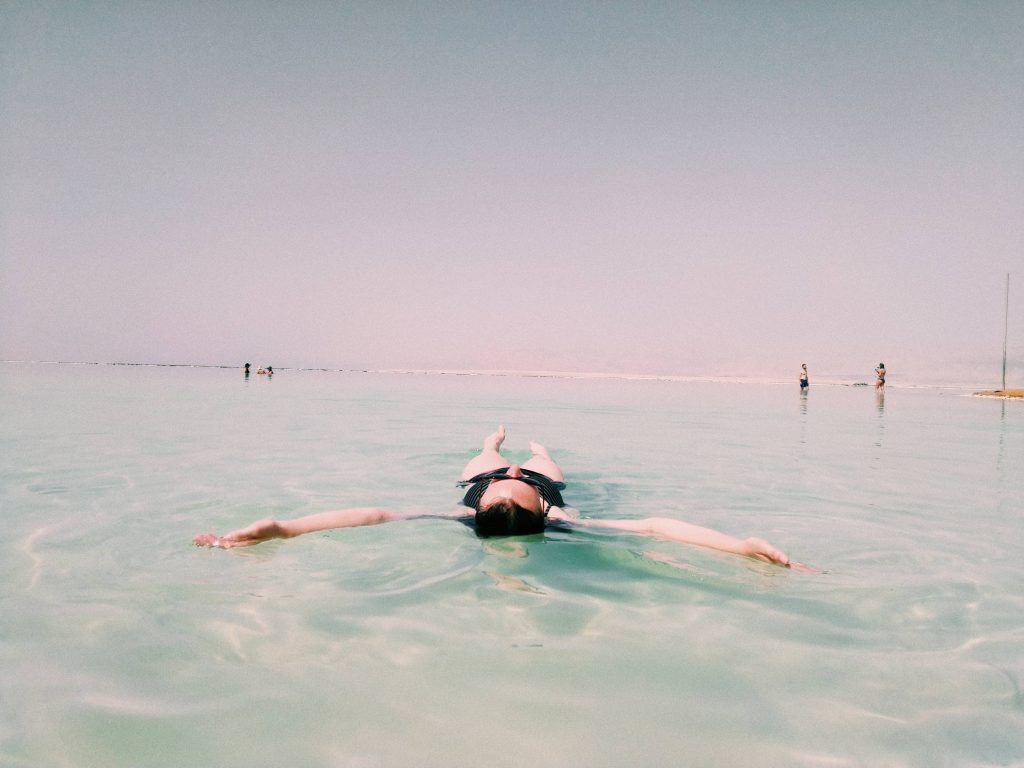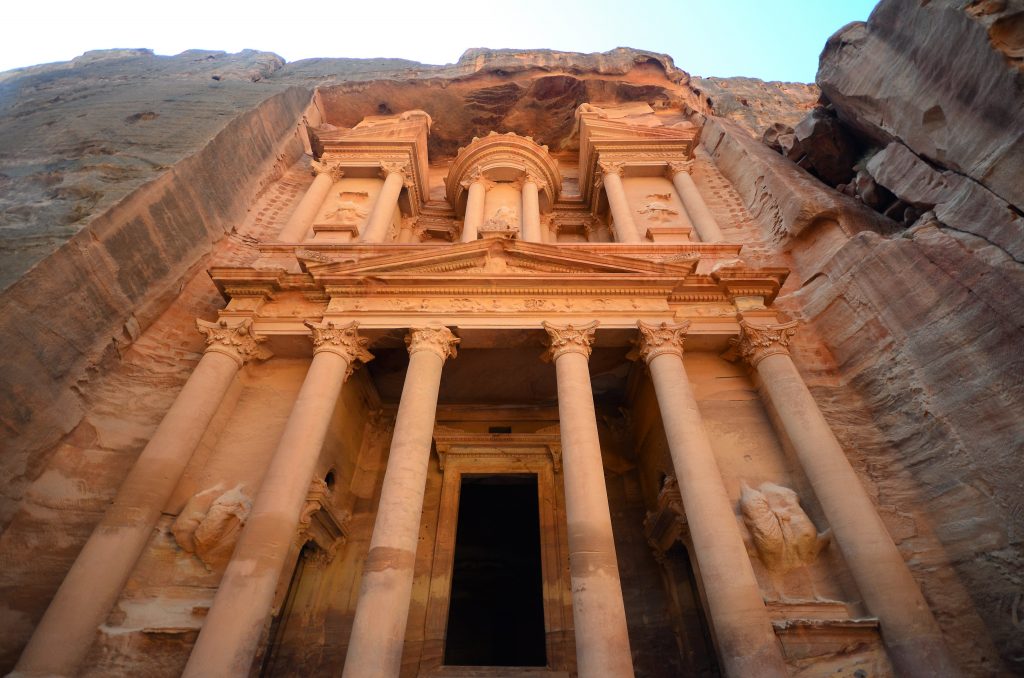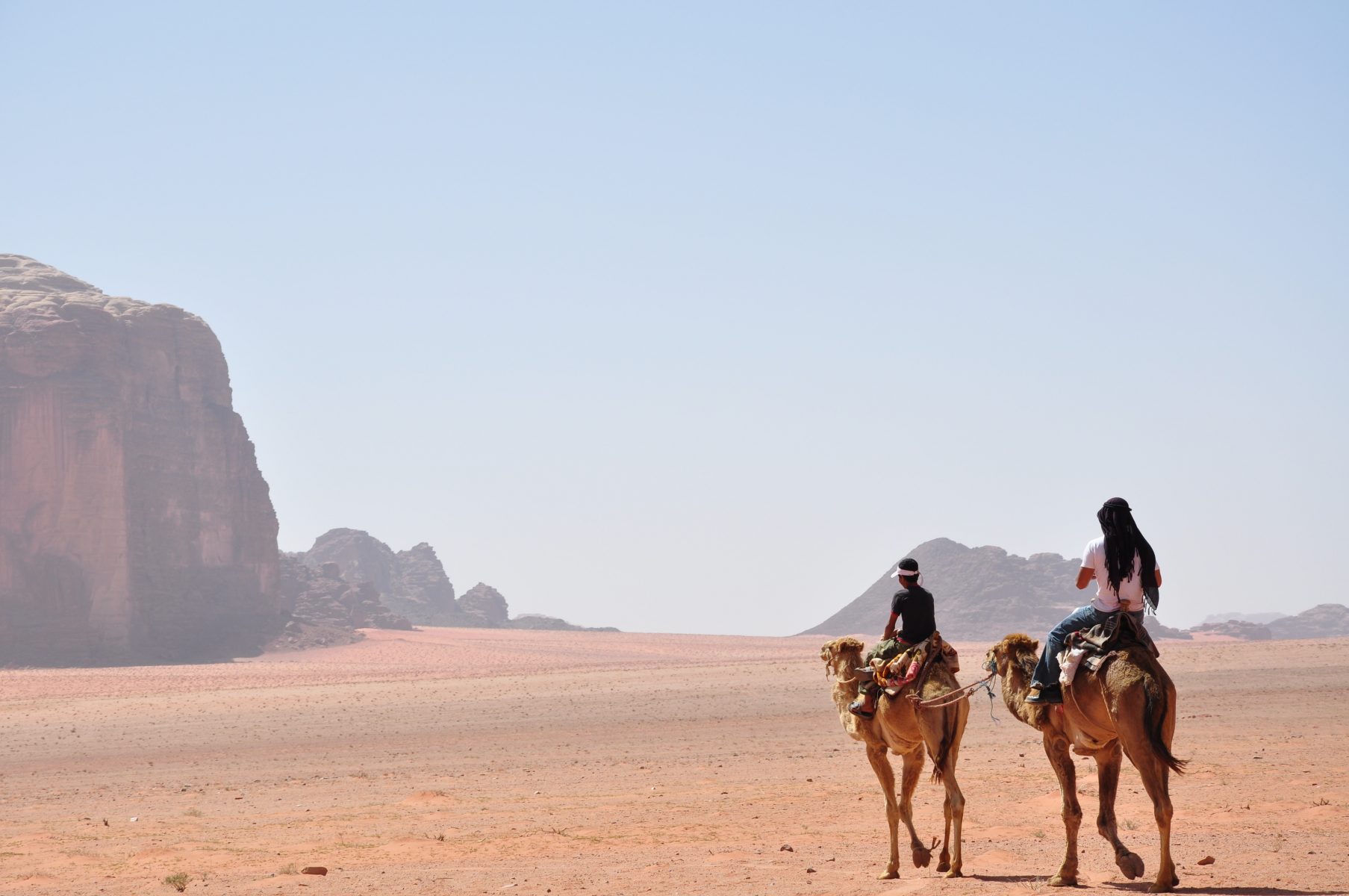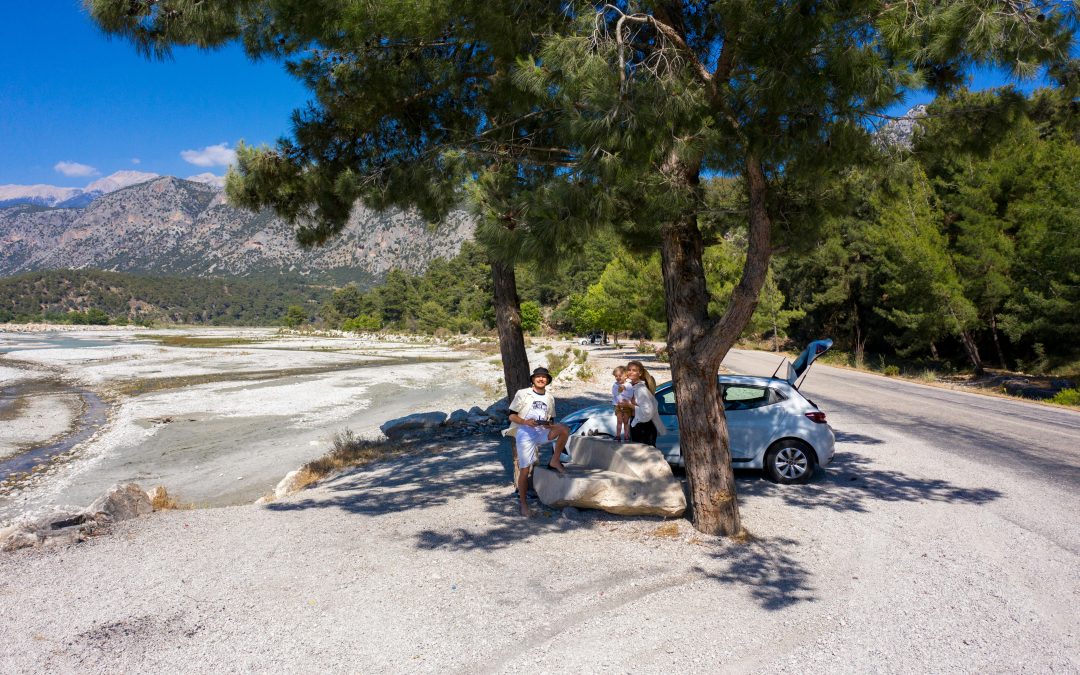Planning a journey of faith to the Holy Land takes skillful planning. This religious travel guide to Israel and Jordan is a great place to start.
Imagine being with church friends in Jerusalem and walking the Way of the Cross, the path that traces Jesus’ route during his last hours on earth. Picture your group on the banks of the Jordan River or sailing across the Sea of Galilee. Ponder the meaning of a worship service at the Church of the Beatitudes—on the very spot where Jesus is said to have preached the Sermon on the Mount.
For any church with a travel program—or thoughts of establishing one—the Holy Land looms as the ultimate destination. Following in the footsteps of Jesus Christ and his disciples can be a life-changing experience, one that transforms the heart and spirit. Indeed, the Bible takes on a whole new meaning for Christians who have traveled to connect with the roots of their faith. Such a trip to the most iconic sites in Christendom—in places straight from the Bible—can strengthen a church community by creating fellowship and providing spiritual renewal for individual members. And think of the sheer adventure of traipsing off to this ancient corner of the world.
While the notion of spending a week or two in the Land of the Bible will generate excitement among the congregation, a trip to Israel and Jordan is obviously a much larger undertaking than a weekend campout. Like any overseas trip, it calls for a certain investment in time and money. And planners need to consider all the logistics involved. But it’s the journey of a lifetime—buckle up!
Pick a Season
Israel has a Mediterranean climate, with hot summers and cool, sometimes rainy weather from November through March, when off-season hotel rates and airfares are considerably cheaper, except at Christmas. Spring and early fall are ideal as the country is virtually rainless from April through October.
Experts recommend any season except for summer, noting that it’s hard to find a hotel room in summer, a time when the Jewish community in Europe comes to visit family and the locals are on vacation. Also, avoid the Easter/Passover period and the Jewish High Holidays in late September/early October. As for airfares, historically they are lowest in February.
Itinerary: How Long and What to Include
Because Israel and neighboring Jordan are small countries—Israel is the size of New Jersey—your group can cover a lot of ground in a week or so, hitting the main sights without many long bus rides. A minimum would be seven days, but 10 or 12 days is better. Keep in mind that a tour operator’s advertised 10-day trip includes only seven or eight days of sightseeing because of travel days and time zone changes. A flight from New York to Tel Aviv is 10 hours and 20 minutes, from Los Angeles 14 hours and 20 minutes.
A multi-day stay in Jerusalem is common to many tours, but even a whole week in this fascinating city would not do it justice. As the cradle of three religions—Christianity, Judaism and Islam—Jerusalem overflows with riches and can be overwhelming if not taken in small doses. Ending the tour in Jerusalem, rather than starting there, gives the group time to acclimate to Israel and guarantees the trip ends on a high note.
A standard tour of Israel also takes in the northern region, where pilgrims visit Capernaum and other Sea of Galilee locations associated with Christ’s ministry. In Nazareth, Christian travelers flock to the massive Basilica of the Annunciation, which occupies the site of Mary’s home, where, according to Roman Catholic tradition, Gabriel made his announcement, or annunciation.
12 Religious Sites in Jordan
Important to note: some places included on a Holy Land tour lie in territory administered by the Palestinian Authority, the most prominent being the Church of the Nativity in Bethlehem, a few miles south of Jerusalem.
Highlights of Jerusalem
The capital of Israel, perhaps the holiest place on earth, is packed with biblical sites, including the Garden of Gethsemane, Garden Tomb, Mount of Olives and Church of the Holy Sepulchre, a place of pilgrimage built on the spot where Orthodox and Catholic Christians believe Jesus was crucified, buried and resurrected. The Via Dolorosa, or Way of the Cross, winds a mile through the Old City and has 14 stations, each with a chapel or marker recalling an incident in Jesus’ final mortal journey. Another must: the sight of Jews praying at the Western Wall, Judaism’s most sacred structure. In West Jerusalem, an important stop is Yad Vashem Memorial and Holocaust Museum.
Must-See Sights in Tel Aviv
This metropolis on the Mediterranean captures the essence of modern Israel, offering the latest in cuisine, fashion and entertainment. For historical sightseeing, there’s Old Jaffa, the ancient seaport that existed long before there was a Tel Aviv. The cobbled lanes of Jaffa’s old quarter are lined with art galleries, shops and restaurants. Nearby Jaffa Flea Market and surrounding streets typify a Middle Eastern bazaar. Other Tel Aviv destinations include the palm-lined beach and raucous Carmel Market, where scrappy merchants peddle produce, souvenirs, cheap clothes and tasty street eats. With Tel Aviv’s Ben Gurion International Airport the gateway to Israel, many groups find it convenient to stay a night in the city, either upon arrival or before the flight home.
Medieval Akko
Tour the ramparts, tunnels, subterranean chambers and medieval quarters of this well-preserved Mediterranean city dating back to biblical times. As recorded in the New Testament, the apostle Paul visited Akko (Acts 21:7). Conquered by the Crusaders in 1104, the fortified port served as their last capital in the Holy Land after the fall of Jerusalem. A walk through the cobbled lanes of the walled Old City reveals mosques, a Turkish bathhouse, outdoor market stalls with copperware vendors and fishing boats in the picturesque harbor.
Sea of Galilee
The fishing village of Capernaum, now an archaeological site with the ruins of a synagogue and the House of St. Peter, was the center of Jesus’ Galilee ministry. It was here that Jesus taught in the synagogue, healed the sick, performed many of his miracles and recruited some of his disciples (“Follow me, and I will make you fishers of men”—Matthew 4:19). Nearby are other important Christian sites, including the domed church on the Mount of Beatitudes (the mountain where Jesus preached the Sermon on the Mount) and, in Tabgha, the Church of the Primacy of Peter and Church of the Multiplication. Boat trips on the Sea of Galilee, actually a lake, are popular with Christian pilgrims.
The Roman Influence of Caesarea
One of the largest archaeological digs in Israel, Caesarea was a Roman city named after Caesar Augustus and once the most important seaport in the Middle East. See the beachfront Roman aqueduct, restored Roman theater and hippodrome where chariot races took place, plus Byzantine and Crusader ruins. Caesarea, the seat of Roman government for more than 500 years, was the home of Pontius Pilate and where the Roman centurion Cornelius was baptized by Peter and became the first gentile to convert to Christianity. Paul spent two years in prison in Caesarea.
Masada, Gateway to the Dead Sea
For panoramic views of the Dead Sea and a lesson in Jewish history, ride the cable car or hike to the top of Masada, an isolated rock rising 1,400 feet above the Negev Desert. Now an archaeological site with a museum, the iconic landmark first served as a palace-fortress for King Herod and in 73 A.D. was where 900 heroic Jewish rebels under siege committed suicide rather than be captured by the Romans camped below.
Nazareth: Where It All Began
Now a regional commercial hub, Nazareth was the site of the first Christian event some 2,000 years ago. Here in this town nestled in the pastoral Galilean hills, the angel Gabriel, sent from God, told the Virgin Mary: “And behold, you will conceive in your womb and bear a son, and you shall call his name Jesus.” (Luke 1:31)
The place where Jesus spent most of his life and started his ministry abounds with churches, convents and monasteries that preserve and testify to the ancient sites. Along with church spires, you’ll see the minarets of mosques, as Israel’s largest Arab city is 60 percent Muslim; Arab Christians make up most of the rest of the population. Arab vendors in the tiny shops of the souk, or open-air market, offer a revealing slice of life to those who wander its narrow alleyways.
The souk, cafes and souvenir shops certainly add local color for groups coming to visit the Basilica of the Annunciation, whose domed roof dominates the Nazareth skyline. Consecrated in 1969, the largest church in the Middle East, maintained by the Franciscan Order, occupies the site of Mary’s home, where, according to Roman Catholic tradition, Gabriel made his announcement, or annunciation. the basilica grounds is the St. Joseph’s Church, built over a cave that, according to tradition, served as the carpentry workshop of Joseph, Jesus’ earthly father.
The sidewalks outside the basilica are lined with souvenir shops catering to pilgrims. For sale are manger sets and statues carved from olive wood, rosaries and icons, plus caftans, shawls, handbags and other examples of Palestinian embroidery. You can buy a set of vials containing “holy olive oil,” “holy soil” and Jordan River water. For a sweet treat, try a honey-soaked Palestinian pastry or dig into a warm slice of kanafeh, a white-cheese pastry sprinkled with pistachios and covered with syrup.
St. Gabriel Greek Orthodox Church of the Annunciation was built over Nazareth’s only natural water source, a spring dubbed Mary’s Well. Greek Orthodox Christians believe it’s the place where Gabriel made his announcement to Mary. It’s probably where the Holy Family came to draw water and maybe even bathe. The spring still flows out of the rocks from the hillside behind the church, as it did 2,000 years ago.
In the Footsteps of Moses at Mount Nebo
Before he died, Moses gazed down over the Promised Land from Mount Nebo, where he could see to the Dead Sea, Jerusalem and beyond. Since the 4th century A.D., this 3,300-foot mountain has been the site of Christian pilgrimage for those wishing to walk in the footsteps of Moses. Upon reaching the summit, pilgrims are greeted with more than just sweeping views. There is a statue of Moses inscribed with these words from John 3: “As Moses lifted up the serpent in the wilderness, so must the Son of Man be lifted up.” Also on the site are a church and excavated mosaics dating back to the 6th century. Today, Mount Nebo, located six miles from the historic religious center of Madaba, is an active Franciscan monastery that is open to visitors.
Dead Sea and Lot’s Cave
But there is so much more to the Dead Sea that makes it a popular site for religious groups traveling through Jordan. One of the most dramatic stories of the Old Testament, that of Lot, is said to have taken place just off the shores of this salty lake. Lot’s wife was turned into a pillar of salt for disobeying God’s will, but his two daughters fled to a cave near the town of modern-day Safi, just south of the Dead Sea. The Bible says that Lot’s daughters gave birth to sons whose descendants later became the Ammonite and Moabite people, whose kingdoms were within modern-day Jordan. Just outside of Safi are a church and monastery dedicated to Saint Lot, built around the cave where Lot and his daughters sought refuge.

Many Israel itineraries include a day or two in a beachfront hotel fronting this mineral-laden lake whose briny water is said to provide relief for sufferers of various ailments. Situated 1,300 feet below sea level and only 15 miles from Jerusalem, the Dead Sea is the lowest spot on earth. It’s de rigueur to go through the ritual of floating effortlessly on the buoyant water—you cannot sink. Another ritual: slathering yourself with oily black mud gathered from the sea floor. At the lake’s northwest corner are the ruins of Qumran, an archaeological site where Bedouin shepherds in 1947 discovered parchment fragments that later became known as the Dead Sea Scrolls.
Picturesque Umm Qais
Situated in the north of Jordan, the picturesque village of Umm Qais was the site of several key events in religious history. Probably the most notable is the Gadarene Swine miracle, which tells the story of Jesus encountering a mad man who lived in the tombs at the city’s entrance. Jesus cast the bad spirits out of the man and into a nearby herd of pigs that then ran down the hill into the Sea of Galilee and drowned. Recently excavated in Umm Qais was five-aisled basilica that had been built directly over a Byzantine tomb. The arrangement of a church above a tomb is said to be an important factor in indicating that this is the very spot where the Byzantine faithful believed that Jesus performed his miracle.
Madaba: City of Mosaics
The charming small town of Madaba, located along the famous King’s Highway between Amman and the Dead Sea, is known as the “City of Mosaics.” It may be most famous as home to a mosaic map of Jerusalem and the Holy Land that dates back to the 6th century. Consisting of over two million stone pieces, the mosaic is inside the confines of the Greek Orthodox Church of St. George, a gorgeous structure that was built in 1896 over the remains of 6th century Byzantine church. Also in Madaba is the Church of the Virgin and the Apostles, which contains an impressive ancient mosaic depicting scenes from everyday life. Madaba is a great place to stroll through the narrow streets, browse the shops and stop in for tea at a cozy cafe.
The Ruins of Petra
Petra, the most popular destination in Jordan, is renowned throughout the world for its breathtaking ancient ruins that look like something straight out of a movie. But in fact, these ruins date back to the Nabataean empire between 400 B.C. and A.D. 106. Visitors can spend multiple days exploring the passageways, trails, tombs and lookout points to truly experience what was the center of the Nabataean Kingdom. According to Arab tradition, Petra is the spot where Moses struck a rock with his staff and water came forth.

As visitors wander through the sacred valley, there are countless shrines and spots of religious significance to behold. Be sure to climb all the way to the Monastery, a stunning stone structure with a large plaza that was used for religious ceremonies.
It’s impossible to cover all there is to see in the Holy Land, so choose wisely. Just as important as the itinerary is finding a strong tour operator who can deliver a trip of a lifetime.





